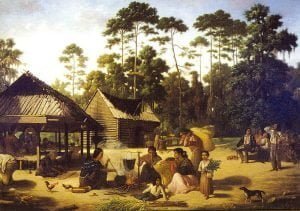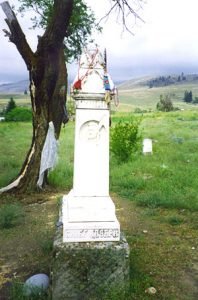LeFlore Choctaw Family – List of Mixed Bloods
When prominent mixed-blood families began to emerge from the Choctaw people in the early 1800s they usually did so where one or both parents were mixed bloods themselves. A case in point is the Leflore family. According to Cushman, the brothers Michael and Louis were living in[90] Choctaw country as early as the late eighteenth century. Cushman has the LeFlores in Mobile not long after the end of the French and Indian War and identifies them as French Canadians who entered Choctaw country as traders, Louis marrying into the mixed-blood Cravat family already in residence there (see Chart 16). J.F.H. … Read more



